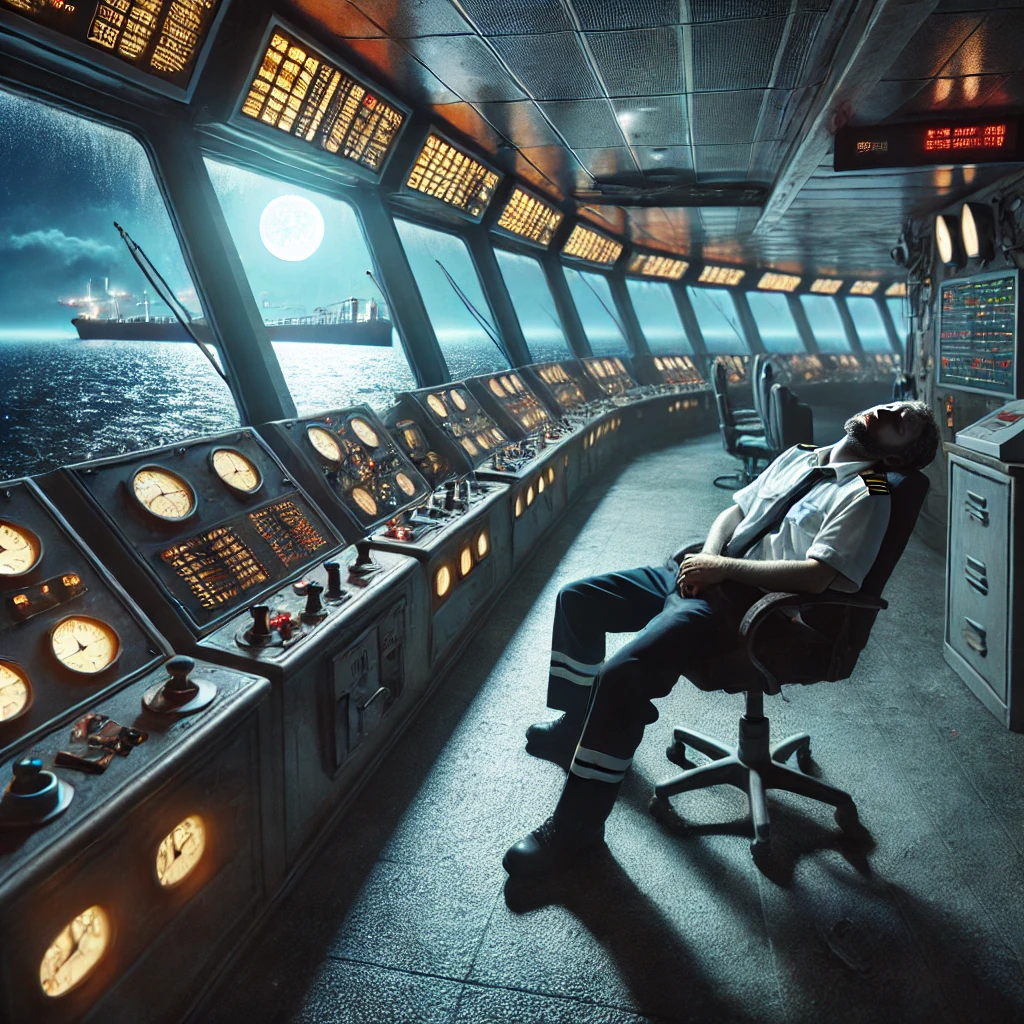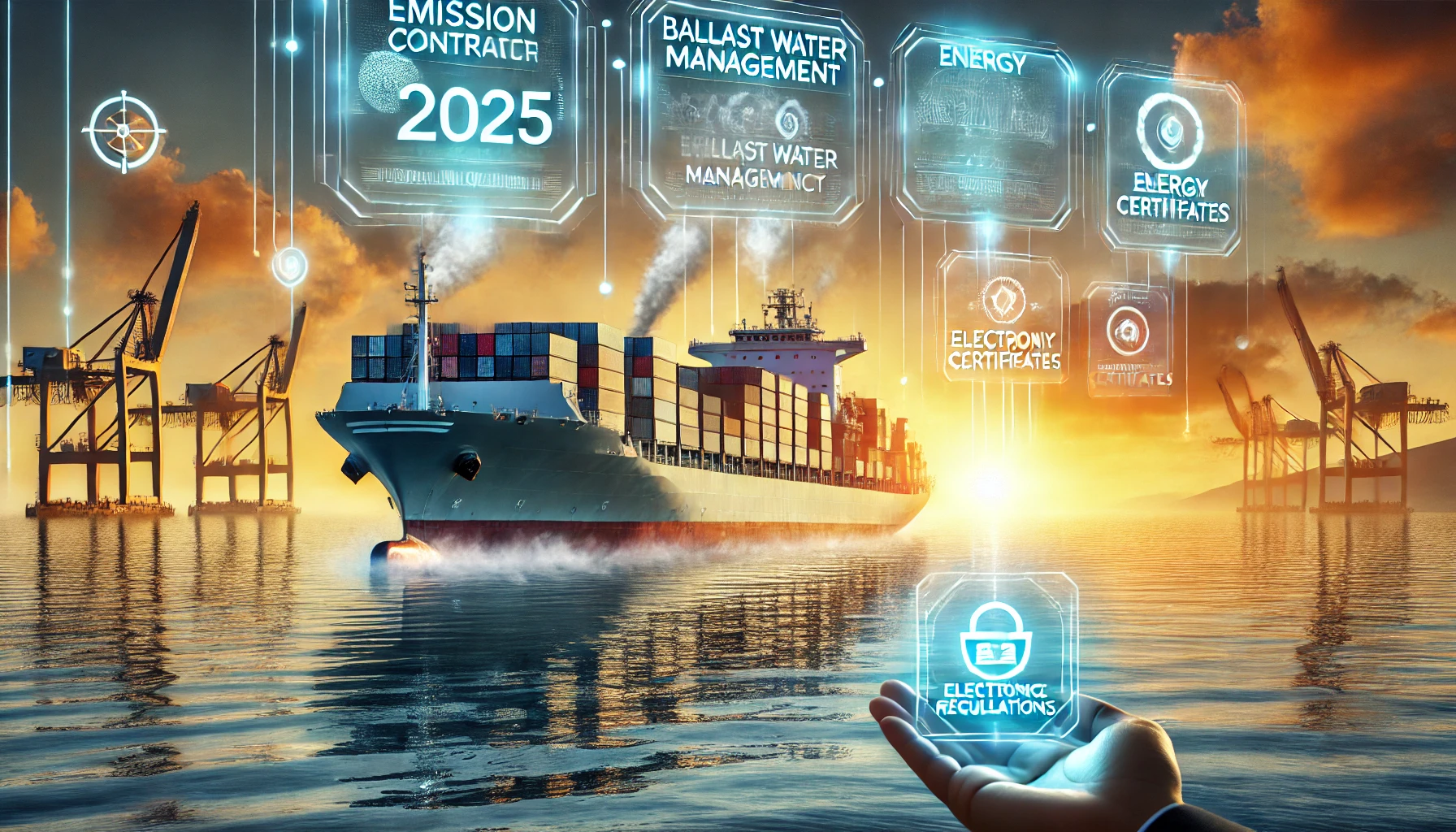Upcoming Maritime Regulations Effective Until September 2025
The maritime industry is set to implement several new regulations by September 2025, aimed at enhancing safety, environmental protection, and operational efficiency. Below is a summary of these forthcoming regulations along with guidance for compliance:
1. STCW – Electronic Certificates
Effective Date: January 1, 2025
Amendments to the International Convention on Standards of Training, Certification, and Watchkeeping for Seafarers (STCW) will permit the use of electronic certificates, provided they meet specific criteria. These digital certificates must display essential information as outlined in IMO circular MSC.1/Circ.1665.Marine Mirror+1Hellenic Shipping News+1Hellenic Shipping News+1Marine Mirror+1
Guidance: Seafarers and shipping companies should ensure that any electronic certificates comply with the stipulated requirements and are readily accessible for verification purposes.Marine Mirror+1Hellenic Shipping News+1
2. IMSBC Code Amendments
Effective Date: January 1, 2025
Amendments 07-23 to the International Maritime Solid Bulk Cargoes (IMSBC) Code, adopted through resolution MSC.539(107), will become mandatory.Marine Mirror+1Hellenic Shipping News+1
Guidance: Operators must familiarize themselves with the updated code to ensure safe handling and transport of solid bulk cargoes.
3. MARPOL Annex I – Special Area Designation
Effective Date: January 1, 2025
The Red Sea and Gulf of Aden will be designated as special areas under MARPOL Annex I. Ships transiting these regions must adhere to stricter regulations concerning the discharge of oily waste, necessitating the use of approved oil filtering equipment with alarms and automatic stopping devices when oil content exceeds 15 parts per million.Hellenic Shipping News+1Marine Mirror+1
Guidance: Vessels should ensure that their oil filtering equipment meets the specified standards and that crew members are trained on the enhanced discharge requirements in these areas.Marine Mirror
4. MARPOL Annex VI – Energy Efficiency Design Index (EEDI) Phase 3
Effective Date: January 1, 2025
EEDI Phase 3 mandates a minimum 30% reduction in energy consumption for new vessels over 400 GT, compared to the baseline.Hellenic Shipping News+1Marine Mirror+1
Guidance: Ship designers and builders should integrate energy-efficient technologies and designs to comply with these stricter efficiency standards.
5. FuelEU Maritime Regulation
Effective Date: January 1, 2025
The FuelEU Maritime regulation aims to reduce greenhouse gas emissions by promoting the use of renewable and low-carbon fuels. Applicable to commercial ships over 5,000 GT operating within EU waters and ports, the regulation targets a 2% reduction in emissions compared to 2020 levels.Marine Mirror+1Hellenic Shipping News+1
Guidance: Shipping companies should assess their current fuel usage and explore alternative fuels or technologies to meet the emission reduction targets.
6. Ballast Water Management Convention (BWM) – Record Book Updates
Effective Dates:
Guidance: Ship operators should update their record-keeping practices in line with the new format and seek necessary approvals if transitioning to electronic record books.
7. MARPOL Annex VI – Mediterranean Emission Control Area (ECA)
Effective Date: May 1, 2025
The Mediterranean Sea will be designated as an Emission Control Area, requiring vessels to use fuels with a maximum sulfur content of 0.1% or to have approved exhaust gas cleaning systems installed.Marine Mirror
Guidance: Vessels operating in the Mediterranean should plan for fuel changes or install compliant emission reduction technologies ahead of the enforcement date.
8. Hong Kong Convention on Ship Recycling
Effective Date: June 26, 2025
This convention ensures that ships are recycled in an environmentally sound and safe manner. Ships over 500 GT flagged by or operating under a party to the convention must maintain an Inventory of Hazardous Materials and undergo surveys to verify compliance.Marine Mirror+1Hellenic Shipping News+1Hellenic Shipping News+1Marine Mirror+1
Guidance: Shipowners should prepare and maintain the required inventory and schedule necessary surveys to demonstrate compliance with the convention’s standards.DNV
9. EU Measures Against Under-Insured Tankers
Implementation Date: Ongoing through 2025
European authorities have agreed to enforce stricter measures ensuring that tankers, particularly those carrying Russian oil, possess adequate accident insurance. Coastal states will request insurance documentation from ships transiting key European waters, with potential sanctions for non-compliance.Financial Times
Guidance: Operators should ensure that all vessels have valid and adequate insurance coverage and are prepared to present documentation when requested by authorities.
10. Singapore’s Digital Bunkering Mandate
Effective Date: April 1, 2025
Singapore will require marine fuel suppliers to provide digital bunkering services and issue electronic bunker delivery notes. This initiative aims to enhance efficiency and transparency in ship fueling processes.Reuters+1Marine Mirror+1
Guidance: Companies operating in Singapore’s port should transition to digital bunkering systems and ensure compliance with the new electronic documentation requirements.
Conclusion
The maritime industry is undergoing significant regulatory changes aimed at improving safety, environmental sustainability, and operational efficiency. Stakeholders should proactively assess their current practices, invest in necessary technologies, and train personnel to ensure seamless compliance with these upcoming regulations.









